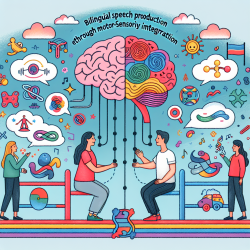As a special education practitioner, you are always looking for effective strategies to enhance language acquisition in children. One powerful technique that has stood the test of time is imitation. Gary Holdgrafer's research article, "A Rationale for Imitation in Language Intervention: A Point of View," provides valuable insights into how imitation can be used effectively in language intervention.
In this blog, we will explore the key takeaways from Holdgrafer's research and how you can implement them to improve your practice.
The Importance of Imitation in Language Intervention
Holdgrafer emphasizes that imitation plays a crucial role in language intervention, regardless of its debated role in normal language acquisition. He distinguishes between two types of imitation:
- Learning to Imitate: Establishing imitative behavior in non-imitative children.
- Learning by Imitation: Using imitation as a procedure to teach language.
By understanding these distinctions, practitioners can better tailor their intervention strategies to meet the unique needs of each child.
Practical Applications of Imitation
Here are some practical ways to incorporate imitation into your language intervention sessions:
- Modeling Correct Responses: Demonstrate the desired language behavior for the child to imitate. This could be a word, phrase, or sentence.
- Reinforcement: Provide positive reinforcement when the child successfully imitates the modeled behavior. This can include verbal praise, stickers, or small rewards.
- Selective Imitation: Focus on specific aspects of the modeled behavior that you want the child to learn. For example, if you are teaching plural forms, emphasize the plural suffix while modeling.
By incorporating these techniques, you can create a structured and supportive environment that encourages language development through imitation.
Encouraging Further Research
While imitation is a powerful tool, it's essential to stay updated with the latest research and techniques in language intervention. Here are some steps you can take to continue improving your practice:
- Attend Conferences and Webinars: Stay informed about the latest research and trends in special education by attending conferences and webinars.
- Read Professional Publications: Subscribe to journals and magazines that focus on language intervention and special education.
- Network with Peers: Join professional organizations and online forums to connect with other practitioners and share insights and experiences.
By continuously seeking out new information and collaborating with others in your field, you can ensure that your intervention strategies remain effective and up-to-date.
Conclusion
Imitation is a valuable tool in language intervention that can help children develop essential language skills. By understanding the principles outlined in Gary Holdgrafer's research and implementing practical strategies, you can enhance your practice and support your students' language development.
To read the original research paper, please follow this link: A Rationale for Imitation in Language Intervention: A Point of View










